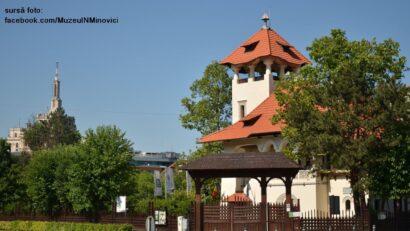Salt, the white gold of the Carpathians
A substance indispensable in the nutrition of humans and animals alike, sodium chloride, also known as salt, has been exploited by people since times immemorial

Christine Leșcu, 27.01.2018, 16:06
Salt’s multiple use has transformed it into an extremely precious commodity, which explains why it is also referred to as “the white gold”. Regions with significant salt deposits have also played an important role throughout time. This is also the case with the Romanian regions believed to be Europe’s richest salt deposits. The salt in these areas has been extracted since ancient times to be used as a spice, medicine and natural preservative. Radu Lungu, the author of a book entitled The Story of the Carpathian Salt, published by Paideia publishing house, tells us more.
Radu Lungu: “As a preservative, salt was used for the transport of meat, fish, vegetables, fruit and cheese. This is why humankind has been so interested in it. Salt has been one of civilization’s constitutive elements. It is used as a spice and taste enhancer, and the Egyptians used in the process of mummifying their dead. There is evidence of salt mining on present-day Romanian territories dating back to before the ancient Dacians, although it was the Dacians who introduced a more elaborate process of exploitation through excavations and diggings. They even had a system of fortifications to protect the salt mines, such as those in Harghita and in the Olt Valley. However, the so-called industrial exploitation began after the Roman conquest of Dacia. The most important salt mines in Dacia Felix, the Dacian territory occupied by the Romans, were in Potaissa, present-day Turda, in Salinae, present-day Ocna Mures, and in the present-day towns of Praid and Ocnele Mari.”
Salt mining in the Romanian principalities during the mediaeval and modern times was princely monopoly, which means that all exploitation and sale operations were centralised. Interest in “the white gold” rose in Transylvania shortly after the installation of Habsburg rule in late 18th century. The salt mines in Cluj, Alba and Harghita, which date back to this period, are still in use. In the extra-Carpathian areas, such as in Wallachia, seven salt mines were in use as early as the 17th century, namely Ocnele Mari, Slanic Prahova and Teisani. In mediaeval and modern Moldavia, the most important salt mines were those in Cacica, in Suceava county, and Targu Ocna, on the river Trotus, in Bacau county. The salt mined here was transported along genuine salt roads, both on water and land. Radu Lungu, the author of a book about the history of salt mining in the Carpathians, explains:
Radu Lungu: “The land routes as a rule were the same as the pastoral trails used by shepherds to take their flocks up and down the mountains. Shepherds would take along with their flocks large sacks of salt on the backs of donkeys, to last them until they got home. Some took the valleys of the rivers Olt, Ialomita and Arges, stopping as far as the Greater Isle of Braila, or even the salt marshes around the Black Sea. On their way to Dobrogea, they stopped at the wool fairs, where they sheared sheep and processed the wool. In Wallachia, for instance, one salt trail started in Telega, Prahova County, and went down as far down as Giurgiu, Oltenita, Calarasi and Braila, all the way to the Danube, and then further, deep into the Ottoman Empire, especially in the Middle Ages.”
The most important water route started in Ocna Mures, in Alba county, and went down on Mures river to Alba Iulia, Deva, Lipova, Arad, and from there to Tisa. This was an important route that supplied the Pannonian basin and the Hungarian Kingdom in the Middle Ages. Today, some of the salt mines that are no longer in use, as well as some that are still operational contain facilities for relaxation and treatment for a range of ailments, such as asthma, rheumatism, gynaecological, neurotic and locomotive disorders.





























